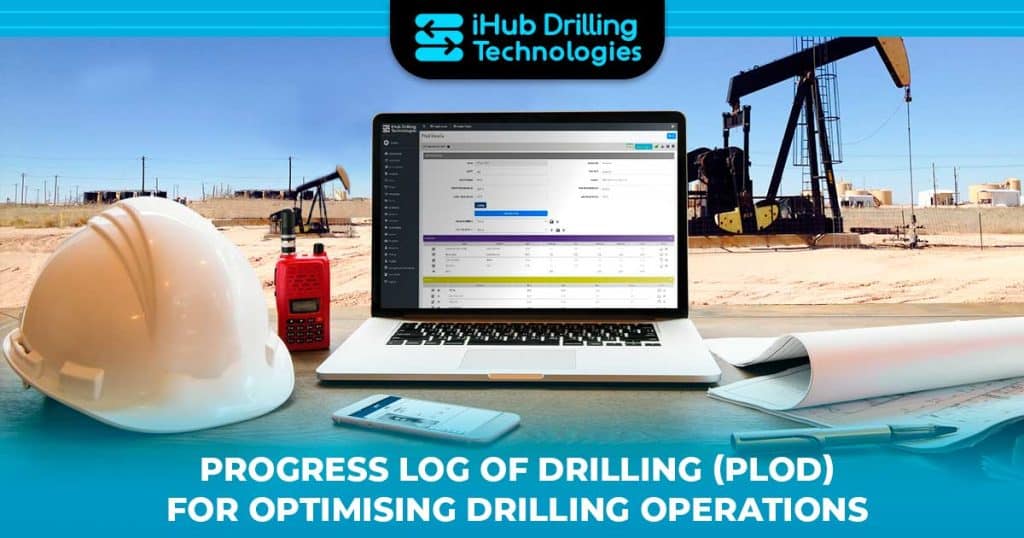
Drilling is a complex and challenging process that requires precision, accuracy, and careful planning. One of the key tools used in managing drilling operations is the PLOD or Progressive Log of Drilling.
What is PLOD?
PLOD is a drilling log or drilling report that contains a detailed record of drilling activities. The information on that report includes location, team members, equipment, drilling time, drilling depth, progress status, and more. Basically, this log records the progress of a drilling operation over time.
The Progressive Log of Drilling is an integral part of reliable drilling management software. By providing real-time data on drilling progress, the PLOD enables drilling teams to make informed decisions and optimise their operations for better performance and efficiency.
The progressive log of drilling serves several important purposes, including:
- Tracking progress over time and identifying any potential issues or delays that may arise.
- Monitoring drilling parameters such as drilling rate, mud weight, and other factors that can affect drilling efficiency and safety.
- Analysing geological conditions encountered during drilling can be used to refine drilling techniques and improve future drilling operations.
- Compliance and reporting for regulatory agencies or other stakeholders as part of the drilling permit requirements.
Benefits of the Progressive Log of Drilling
Some of the key benefits of the Progressive Log of Drilling include:
1. Real-time monitoring and reporting
The log provides real-time monitoring of drilling progress, enabling drilling teams to quickly identify and address any issues that arise during the drilling process. This can help to minimise downtime, reduce costs, and improve overall drilling efficiency.
2. Data collection and analysis
It collects and records data on drilling activities, such as drilling time, drilling depth, and progress status. This data can be analysed and interpreted to identify patterns, trends, and areas for improvement, enabling drilling teams to optimise drilling operations and reduce costs.
3. Improved drilling performance and efficiency
By using the Progressive Log of Drilling to monitor and manage drilling operations, drilling teams can improve drilling performance and efficiency. This can lead to faster drilling times, improved drilling accuracy, and reduced costs.
4. Cost reduction
PLOD can help reduce costs by optimising drilling operations and minimising downtime. By identifying areas for improvement and making informed decisions based on data from the Progressive Log of Drilling, drilling teams can reduce costs and improve overall drilling efficiency.
5. Compliance with regulatory requirements
This log is an essential tool for ensuring compliance with regulatory requirements, such as reporting requirements and safety regulations. By collecting and recording data on drilling activities, drilling teams can ensure that they meet regulatory requirements and avoid potential penalties or fines.
How to Use the PLOD
Using the Progressive Log of Drilling is a straightforward process that involves:
- Setting up the log. This involves defining the data fields and formats, creating a data entry template, and establishing protocols for data collection and entry.
- Once the log is set up, data collection and entry can begin. This involves collecting data on drilling activities, such as drilling time, drilling depth, and progress status, and entering the data into the log.
- Data analysis and interpretation. The collected data then can be analysed and interpreted to identify patterns, trends, and areas for improvement.
- Making informed decisions based on the insights gained from data analysis. The drilling teams can make informed decisions to optimise drilling operations. This can involve making adjustments to drilling techniques, drilling speed, drilling depth, drilling direction, adjusting the equipment, and other factors to improve performance and efficiency.
PLOD Best Practices
To get the most out of the PLOD, it is important to follow best practices for data collection, monitoring, and reporting. Some of the key best practices for using the Progressive Log of Drilling include:
- Timely and accurate data entry to ensure that the data is useful and relevant. This involves establishing protocols for data entry and ensuring that they are followed consistently.
- Regular monitoring and reporting of the drilling progress. This can involve setting up automated reporting tools and alerts. It is essential for identifying progress, and issues, and then making informed decisions based on PLOD data.
- Integration with drilling management software to provide a comprehensive view of drilling operations. This can help to streamline operations and improve overall efficiency.
- Sharing data and collaboration between drilling teams and management to optimise drilling operations.
- Continuous improvement based on data for optimising drilling operations over time.
Future Development of the Progressive Log of Drilling
The Progressive Log of Drilling is an evolving technology that is constantly being improved and updated. One trend in PLOD development is the integration of machine learning and artificial intelligence technologies. These technologies can help to automate data analysis and decision-making based on data from the log, further improving drilling performance and efficiency.
Another trend in the development is integration with other drilling technologies. For example, the PLOD can be integrated with drilling management software to provide a comprehensive view of drilling operations. This is exactly what iHub Drilling Technologies does. The integration can help to streamline operations and improve overall efficiency.
